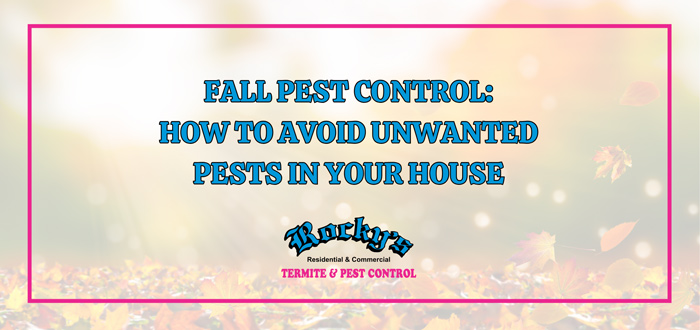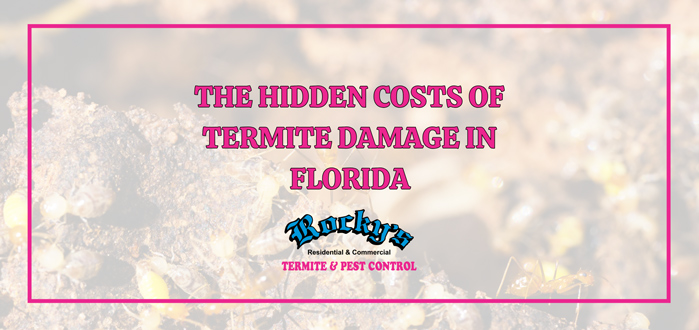Termite Troubles: Understanding the Signs and Symptoms of an Infestation
- September 8, 2023
- / Rocky
- / TERMITES

Termite infestations can be a homeowner's worst nightmare. These tiny, wood-eating pests can cause extensive damage to your property if left unchecked. So, how can you spot the signs and symptoms of a termite infestation? In this article, we will dive deep into the world of termites, helping you understand the telltale clues that your home might be harboring these destructive creatures.

One of the most common signs of a termite infestation is the presence of mud tubes. These pencil-sized tunnels provide shelter for termites as they move between their colonies and food sources. Additionally, you might notice discarded wings near windows or doors, as termites shed their wings after swarming to find a mate.
Another key indicator of a termite problem is wood damage. Termites tunnel through wood, leaving behind hollowed-out galleries. Spongy or warped floors, sagging ceilings, or a hollow sound when tapping wood surfaces can all indicate termite activity.
By familiarizing yourself with these signs and symptoms, you'll be better equipped to identify and address termite troubles before they cause extensive damage to your home. So stay vigilant and protect your property from these silent invaders.
Common signs of a termite infestation
When identifying a termite infestation, there are a few common signs to look out for. One of the most noticeable signs is the presence of mud tubes. You might find these tubes on the exterior foundation of your home or in your basement. They often indicate that termites have made their way into your property.
Another key indicator of a termite problem is the presence of discarded wings. Termites shed their wings after swarming to find a mate. If you notice piles of wings near windows, doors, or light fixtures, it could mean that a termite colony is nearby. These discarded wings are usually found in large numbers, and they are a clear sign that termites are present in your home.
Apart from mud tubes and discarded wings, other signs can help you identify a termite infestation. One such sign is the presence of frass, which is termite droppings. These tiny pellets resemble sawdust or coffee grounds and can be found near termite galleries or entry points. If you come across these droppings, it is a strong indication that termites are actively infesting your property.
Identifying termite damage
Now that we have covered the signs of a termite infestation let's talk about the damage they can cause. Termites tunnel through wood, leaving behind hollowed-out galleries. This can result in spongy or warped floors, sagging ceilings, or a hollow sound when tapping on wood surfaces. If you notice any of these signs, it is crucial to investigate further for a termite infestation.
In addition to structural damage, termites can also cause damage to other materials, such as drywall and wallpaper. They can create blistering or peeling paint, as well as small holes or tunnels in these surfaces. If you observe any of these signs, it is essential to address the issue promptly to prevent further damage.
Types of termites and their behavior

Termites come in various types, each with its own behavior and characteristics. Understanding the different types can help you identify and address a termite infestation better. The three main types of termites are subterranean termites, drywood termites, and dampwood termites.
Subterranean termites are the most common type found in the United States. They build their nests underground and create mud tubes to access above-ground food sources. Subterranean termites are known for their destructive nature and can cause significant damage to structures if not treated promptly.
Drywood termites, as the name suggests, infest dry wood and do not require contact with soil. They create small, smooth-sided galleries within the wood and can cause severe damage over time. Drywood termites are commonly found in warmer regions and are known for their ability to infest furniture, wooden beams, and other wooden structures.
Dampwood termites, as the name implies, thrive in damp or decaying wood. They are attracted to areas with high moisture content and can be found in basements, crawl spaces, or areas with plumbing leaks. Dampwood termites are typically larger than other termite species and can cause significant damage to water-damaged wood.
Preventing termite infestations
Prevention is key when it comes to termite infestations. Implementing a few simple measures can greatly reduce the risk of termites entering your home. One of the most effective prevention methods is to eliminate any sources of moisture around your property. Fixing leaky pipes, keeping gutters clean, and ensuring proper drainage can go a long way in preventing termite infestations.Another preventive measure is maintaining a gap between the soil and wooden structures. Termites can easily access your home through direct contact between wood and soil. Creating a barrier such as gravel or concrete can make it harder for termites to invade your property.
Regular inspections and maintenance are also essential in preventing termite infestations. Conducting routine checks for signs of termite activity, such as mud tubes or discarded wings, can help you catch an infestation in its early stages. Additionally, keeping firewood and other wooden debris away from your home can reduce the chances of termites finding their way inside.
When to call a professional termite exterminator
While DIY methods can be effective for small or early-stage infestations, there are instances where it is best to call in a professional termite exterminator. If you have a large or severe infestation, professional treatment is often necessary to ensure complete eradication of the termites.
Additionally, if you are unsure about the extent of the infestation or are still looking for termite colonies, it is best to consult an expert. Professional termite exterminators have the knowledge, experience, and tools to accurately assess the situation and provide the most effective treatment options.
Remember, termites can cause extensive damage to your property, and early intervention is crucial to prevent further destruction. If you suspect a termite infestation or notice any signs of termite activity, it is always better to err on the side of caution and seek professional help.
Sentricon: The best termite prevention option
The Sentricon Termite Prevention System uses bait stations with a highly attractive food source for termites. The termites feed on the bait and return it to their colony, where it is shared with other termites. The active ingredient in the bait slowly kills the termites, ultimately eliminating the colony. This system is designed to be environmentally friendly and does not require drilling or trenching around your property. The Sentricon termite prevention system is designed to provide long-term protection against termites. It can remain effective for several years, with some studies showing that it can continue to protect against termites for up to 10 years or more. However, regular monitoring and maintenance are recommended to ensure ongoing effectiveness.
Conclusion and final thoughts
Termite infestations can be a homeowner's worst nightmare, but by familiarizing yourself with the signs and symptoms, you can take proactive measures to protect your property. From mud tubes and discarded wings to wood damage and frass, these signs can help you identify a termite infestation early on.
Prevention is key when it comes to termite control. By implementing simple measures such as eliminating moisture sources, maintaining a gap between soil and wood, and conducting regular inspections, you can greatly reduce the risk of a termite infestation.
While DIY methods can be effective for small or early-stage infestations, it is important to know when to call a professional termite exterminator. Professional treatment is often necessary for large or severe infestations to ensure complete eradication of the termites.
Remember, the cost of termite control is an investment in protecting your property. By addressing a termite infestation promptly and investing in professional treatment, you can save yourself from extensive damage and costly repairs in the future.
Stay vigilant and protect your property from these silent invaders. With the knowledge and understanding of termite signs and symptoms, you can take control of your home's termite troubles and maintain a termite-free environment for years to come.
 Cockroach Identification 101: Learn How to Identify Common Cockroach Species and Take Action
Cockroach Identification 101: Learn How to Identify Common Cockroach Species and Take Action
 The Ultimate Guide to Bed Bug Extermination: Say Goodbye to Sleepless Nights!
The Ultimate Guide to Bed Bug Extermination: Say Goodbye to Sleepless Nights!
 Fall Pest Control: How To Avoid Unwanted Pests In Your Home
Fall Pest Control: How To Avoid Unwanted Pests In Your Home
 Hidden Costs Of Termite Damage In Florida: How Much Will it Cost to Repair?
Hidden Costs Of Termite Damage In Florida: How Much Will it Cost to Repair?